You can contact LEARNZ, part of CORE Education, at:
Postal Address:
PO Box 13 678,
Christchurch 8141,
New Zealand
Using Google Earth you can follow the path of any Argo Float, anlayse the data that it uploads, and learn about what is happening in the oceans.
You can see every Argo Float on ‘Google Earth’ and follow the path of any selected Argo Float.
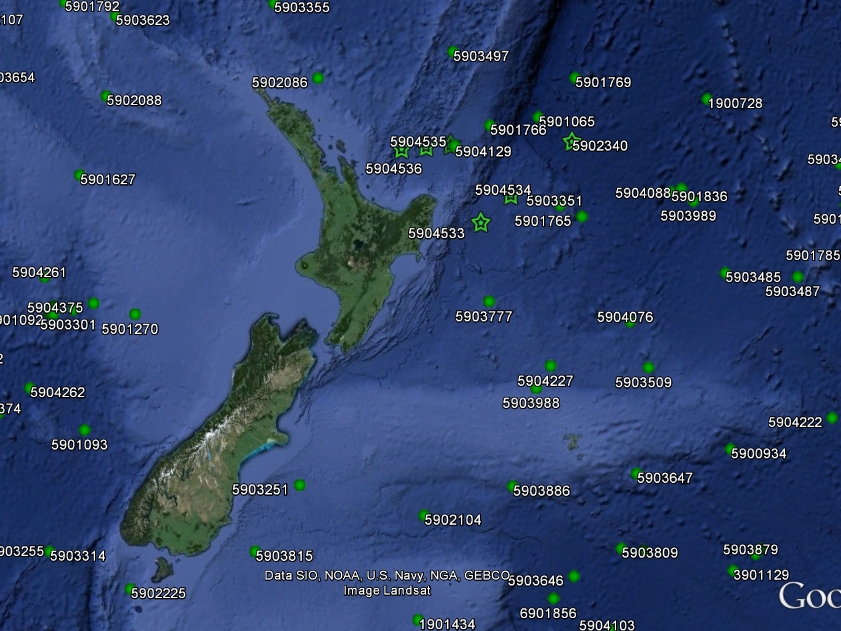
Above: here are all the Argo Floats around the coast of New Zealand. Can you spot Argo Float #5903777? It is in the Pacific Ocean to the east of Palmerston North.
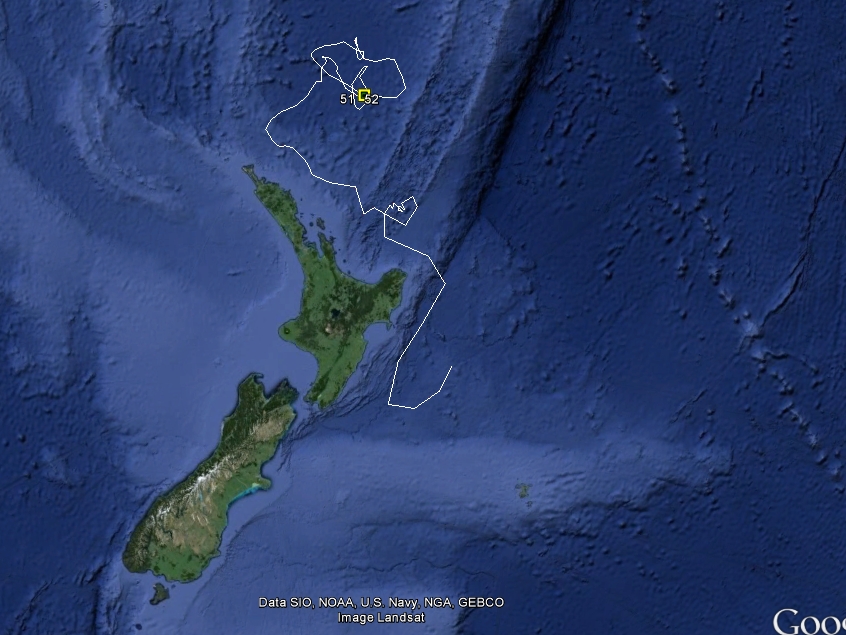
Above: by clicking on the dot beside Argo Float #590377 you can see its trajectory (path) since it was deployed. The location of its launch is marked as a yellow box.
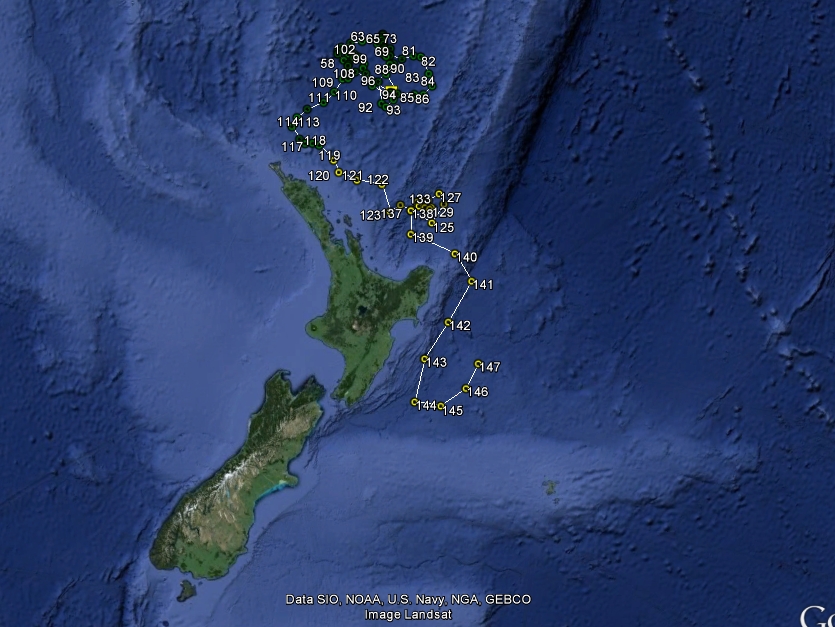
Above: you can choose to see all the locations where Argo Float #590377 surfaced and uploaded a profile to a satellite. How many profiles have been uploaded so far? Has the Argo Float drifted north or south since it was released. What direction is it drifting now?
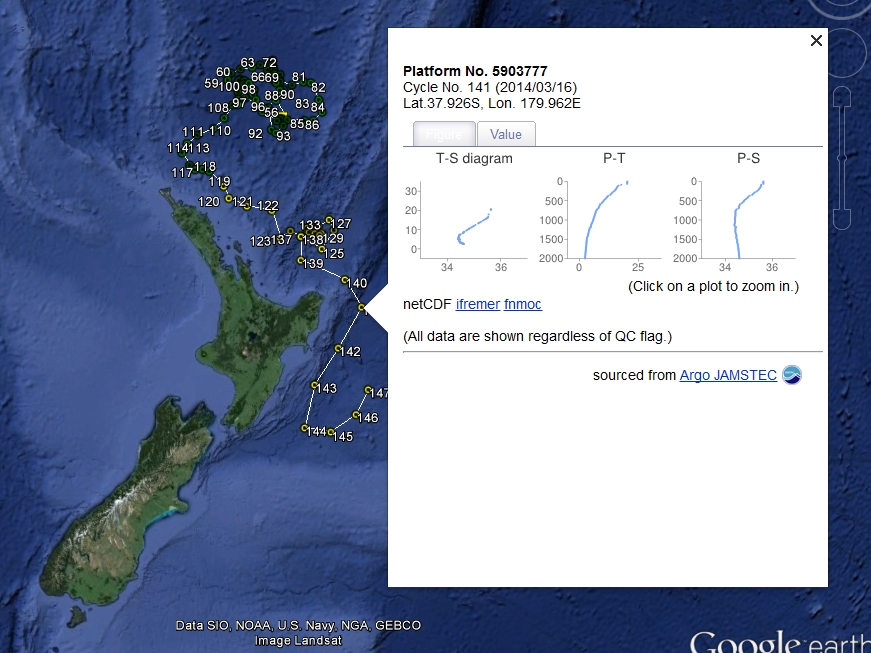
Above: by clicking on one dot you can see the profile that was uploaded at that location. This profile was from cycle #141, uploaded on the 16th March 2014 at latitude 37.926S and longitude 179.962E.
Below: by clicking on the small graphs you can see one temperature and salinity profile for that location in more detail.
What is happening here? Salinity falls rapidly from 35.5 to 34.4 but then stays at 3.4. before rising to 34.6.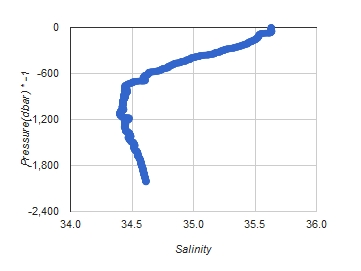 |
What is happening here? Temperature falls rapidly from 19 degrees at the surface to 4 degrees and then more slowly to 2.5 degrees at the deepest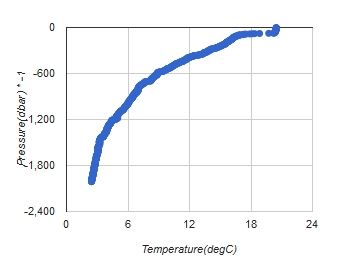 |
One temperature or salinity profile is not as useful as many profiles combined together. The website at the Woods Hole Oceanographic Institution![]() has combined the data for all Argo Floats. The following two graphs are similar to the ones above but combine all the data for Argo Float #5903777 (off the east coast of the North Island).
has combined the data for all Argo Floats. The following two graphs are similar to the ones above but combine all the data for Argo Float #5903777 (off the east coast of the North Island).
Interpreting the Argo Float profiles means thinking about:
|
Things to look out for in the salinity (S) profiles:
Note that the earliest profiles are blue; the latest are deep red and brown.
|
Things to look out for in the temperature (T) profiles:
Note that the earliest profiles are blue; the latest are deep red and brown. |
|
What is happening here?
|
What is happening here? Water at deeper levels is coldest. Note there was warmer surface water in profiles 60-75, 100-110 and 130-140. Why do you think might be? |
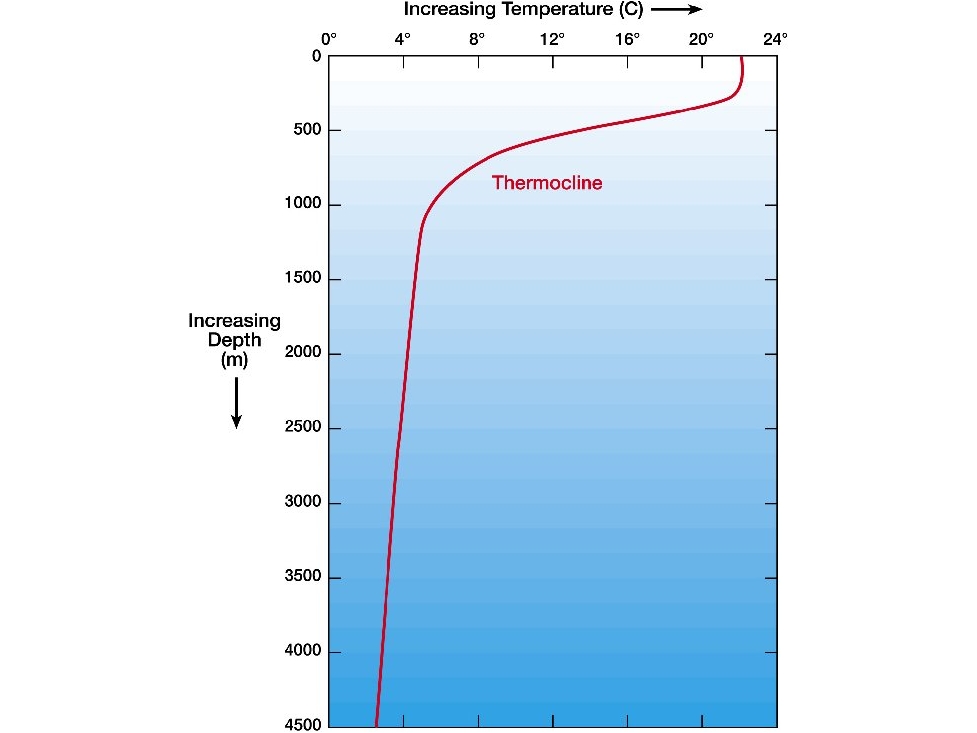
,A profile showing changing temperature with depth underwater. You can see that the water in the top layer (1,000m) cools quickly with depth. Below that the temperature changes very slowly with depth. The top layer is called a thermocline. Image source
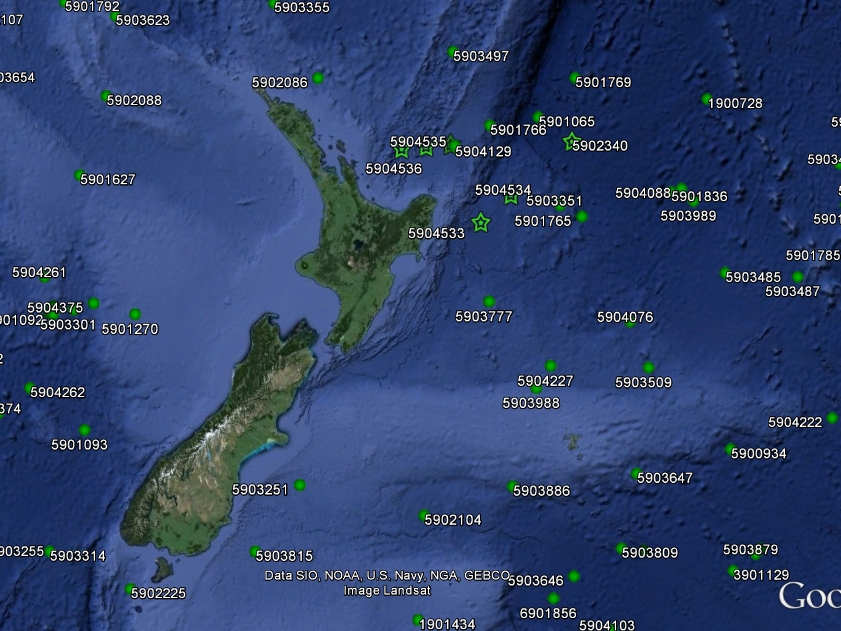
,1 Here are all the Argo Floats around the coast of New Zealand. Can you spot Argo Float #5903777? It is in the Pacific Ocean to the east of Palmerston North.
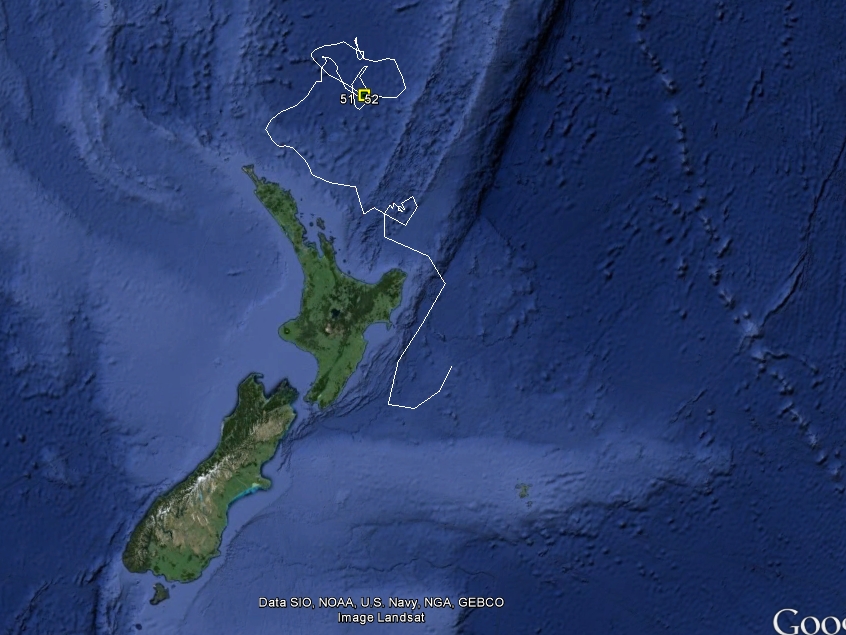
,2 By clicking on the dot beside Argo Float #590377 you can see its trajectory (path) since it was deployed. The location of its launch is marked as a yellow box.
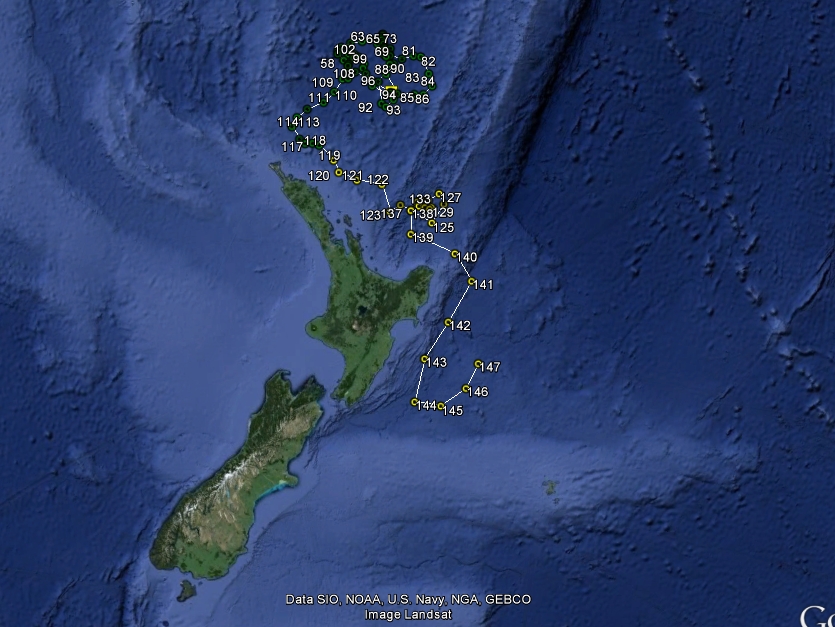
,3 You can choose to see all the locations where Argo Float #590377 surfaced and uploaded a profile to a satellite. How many profiles have been uploaded so far? Has the Argo Float drifted north or south since it was released. What direction is it drifitng now?
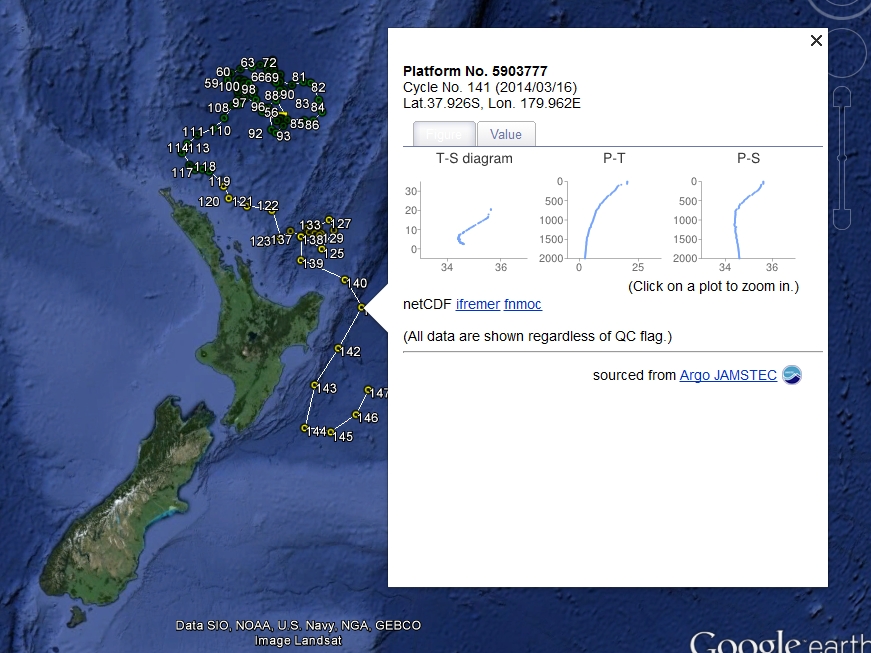
4 By clicking on one dot you can see the profile that was uploaded at that site. This profile was from cycle #141, uploaded on the 16th March 2014 at latitude 37.926S and longitude 179.962E.
Next step learning: Use Google Earth to adopt an Argo Float deployed during this June 2014 LEARNZ field trip. Details of the Argo Float (eg its WMO number and location) will be available in the field trip diaries.